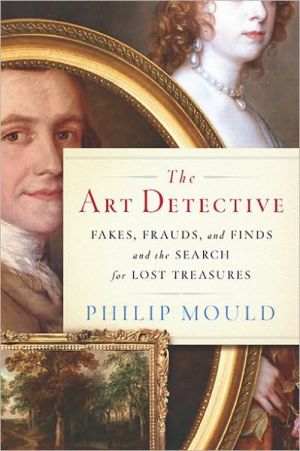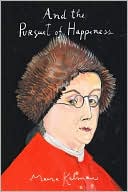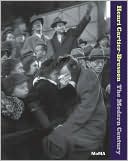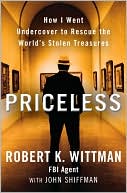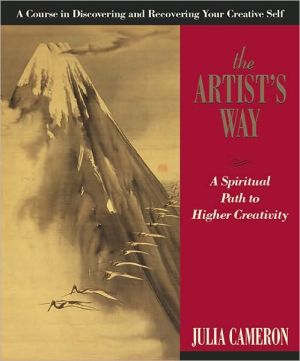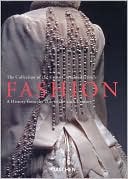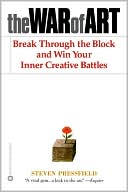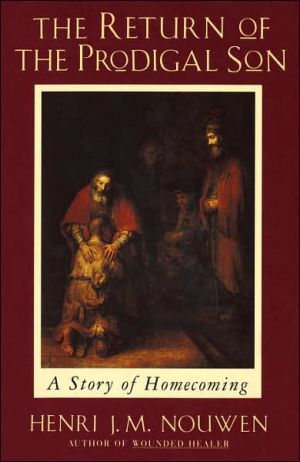The Art Detective
The art world has never seemed quite so treacherous, so beguiling- and so much fun\ What separates a masterpiece from a piece of junk? Thanks to the BBC's Antiques Roadshow and its American spin-off, everyone is searching garage sales and hunting online for hidden gems, wondering whether their attics contain trash or treasures. In The Art Detective, Philip Mould, one of the world's foremost authorities on British portraiture and an irreverent and delightful expert for the Roadshow, serves up...
Search in google:
The art world has never seemed quite so treacherous, so beguiling- and so much fun What separates a masterpiece from a piece of junk? Thanks to the BBC's Antiques Roadshow and its American spin-off, everyone is searching garage sales and hunting online for hidden gems, wondering whether their attics contain trash or treasures. In The Art Detective, Philip Mould, one of the world's foremost authorities on British portraiture and an irreverent and delightful expert for the Roadshow, serves up his secrets and his best stories, blending the technical details of art detection and restoration with juicy tales peopled by a range of eccentric collectors, scholars, forgers, and opportunists. Peppered with practical advice, each chapter focuses on one particular painting and the mystery that surrounds it. Mould is our trusty detective, tracking down clues, uncovering human foibles and following hunches until the truth is revealed. Mould is known for his ability to crack the toughest puzzles and whether he's writing about a fake Norman Rockwell, a hidden Rembrandt, or a lost Gainsborough, he brings both the art and the adventure to life. The Art Detective is memoir, mystery, art history, and brilliant yarn all rolled into one.Kirkus ReviewsAn insider's look at the exciting and unpredictable "discovered masterpiece" side of the art world. If the author's appearances on Antiques Roadshow have taught aspiring art collectors anything, it's that discovery is possible. Antique paintings are often unattributed or mislabeled, and that dusty Rembrandt look-alike at the flea market may well be the real thing, with centuries of pollution and poorly applied overpaint disguising it. Mould, a London gallery owner and art sleuth, tells his tale of a rags-to-riches Rembrandt, the restoration of which he calls "the boldest feat of detection and restoration I had ever heard sanctioned by an eminent academic." An engaging storyteller, the author describes several other adventures, all of which culminate in the affirmation of an authentic work. There was the emergence of an early Thomas Gainsborough, originally mislabeled at auction; the enthralling story of an unknown portrait of Elizabeth I, whose history was almost as intriguing as the painting itself; and a Homer watercolor that washed up in dump in Ireland, sending Mould on a trip through several countries before he was able to connect the dots of its provenance. In the most mysterious tale in the book, the author describes how a fake Norman Rockwell was not only touted as authentic in the Rockwell Museum, but that the painting was part of a plot concocted to hide the original during a nasty divorce. The Rockwell scam involved two generations, a masterful forgery and secret storage panels. Mould points out that art, and its pursuit, "can be extremely eloquent about human behavior," a theme to which he often returns in examining the "innumerable paths, dramas, challenges and characters" that make up the discovery market. The author also explores the nuances of connoisseurship, the delicate risks and startling rewards of restoration and the science of correctly identifying an unknown painting by an established master. Informative and fun. Agent: Elizabeth Sheinkman/Curtis Brown
\ From Barnes & NobleAs some point, all good bibliophiles take a step back from their crowded bookshelves and ask, "What am I really interested in?" Identifying the underlying questions that guide our reading obsessions often brings surprising answers. In my case, I realized that I have always been fascinated with evidence and memory; that much of my interest in everything from ancient history to true crime has its origins in my curiosity about what really happened. Philip Mould's The Art Detective answered my penchant with six chapter-length stories about the detection of artistic thefts, hoaxes, and rediscoveries. Mould, a BBC Antiques Roadshow regular, unfolds each puzzle with clarity and a sense of the personalities involved, albeit painter or forger. For me, the chapter on a Norman Rockwell fake alone was worth the price of the book. ?RJ Wilson, Bookseller, #1002, New York NY\ \ \ \ \ Kirkus ReviewsAn insider's look at the exciting and unpredictable "discovered masterpiece" side of the art world. If the author's appearances on Antiques Roadshow have taught aspiring art collectors anything, it's that discovery is possible. Antique paintings are often unattributed or mislabeled, and that dusty Rembrandt look-alike at the flea market may well be the real thing, with centuries of pollution and poorly applied overpaint disguising it. Mould, a London gallery owner and art sleuth, tells his tale of a rags-to-riches Rembrandt, the restoration of which he calls "the boldest feat of detection and restoration I had ever heard sanctioned by an eminent academic." An engaging storyteller, the author describes several other adventures, all of which culminate in the affirmation of an authentic work. There was the emergence of an early Thomas Gainsborough, originally mislabeled at auction; the enthralling story of an unknown portrait of Elizabeth I, whose history was almost as intriguing as the painting itself; and a Homer watercolor that washed up in dump in Ireland, sending Mould on a trip through several countries before he was able to connect the dots of its provenance. In the most mysterious tale in the book, the author describes how a fake Norman Rockwell was not only touted as authentic in the Rockwell Museum, but that the painting was part of a plot concocted to hide the original during a nasty divorce. The Rockwell scam involved two generations, a masterful forgery and secret storage panels. Mould points out that art, and its pursuit, "can be extremely eloquent about human behavior," a theme to which he often returns in examining the "innumerable paths, dramas, challenges and characters" that make up the discovery market. The author also explores the nuances of connoisseurship, the delicate risks and startling rewards of restoration and the science of correctly identifying an unknown painting by an established master. Informative and fun. Agent: Elizabeth Sheinkman/Curtis Brown\ \
